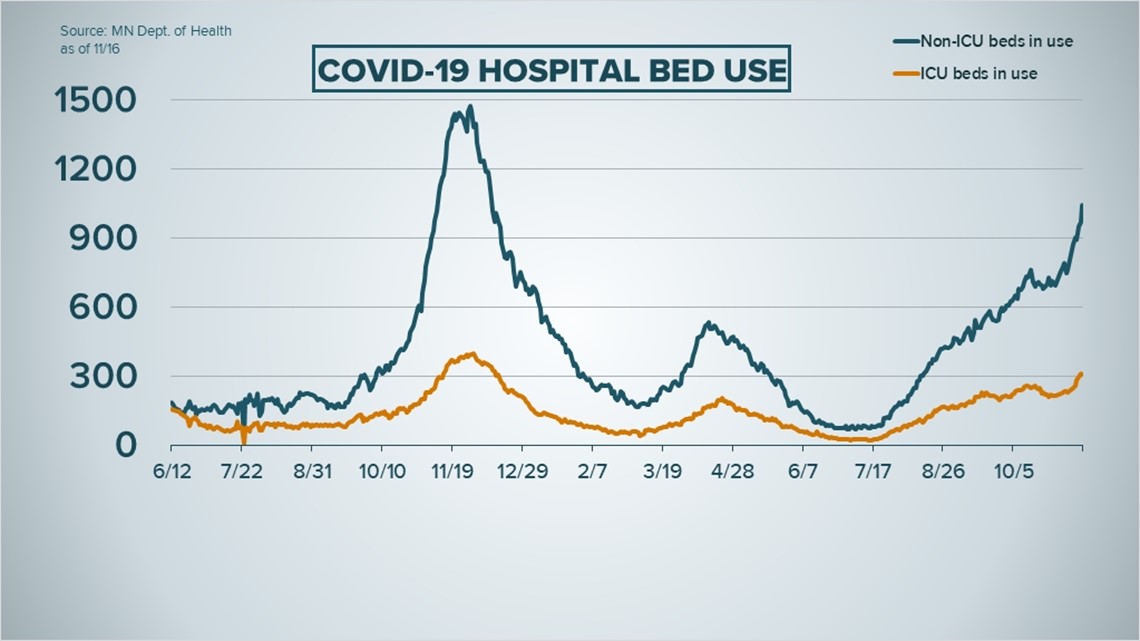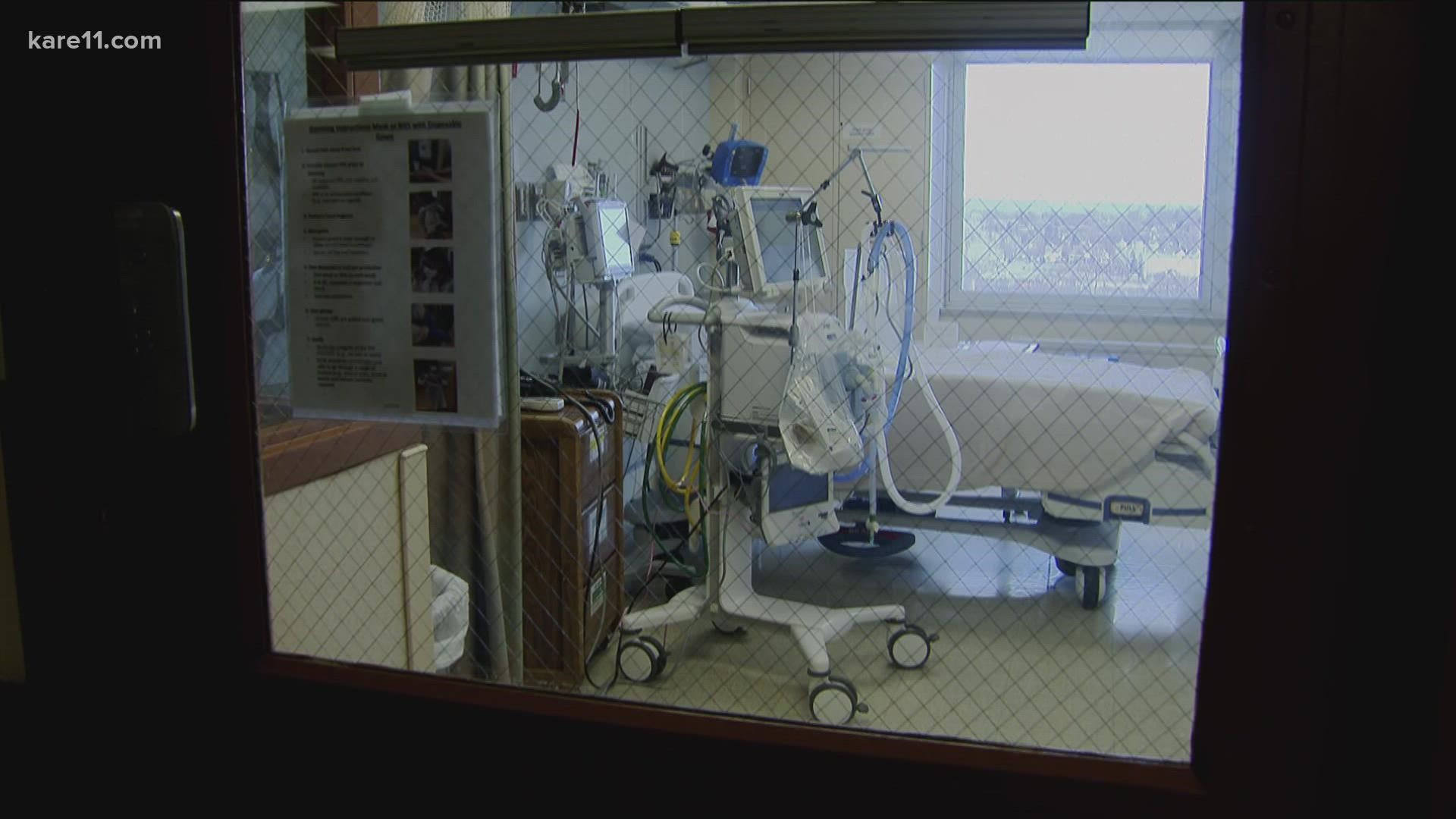MINNEAPOLIS — COVID-19 hospitalizations are rising at a steep pace across all areas of Minnesota, and though they have yet to hit last year's devastating peak, doctors and nurses say they already feel like they're on the edge of a cliff.
"I did not realize that it could get worse, but here we are," said Dr. Sara Spilseth, Chief of Staff at Regions Hospital, where the number of hospitalized COVID patients has doubled in just two weeks. "People are dying from COVID even though they don't have COVID. They are dying from COVID because our hospitals are so full of COVID patients that we can't take care of anything else."
Emily Allen is an ICU Nurse who used to work in two different M Health Fairview COVID units, who relocated to a standard ICU unit inside St. John's Hospital several months ago. She says it's become common for all 20 beds to be full, with even more patients staged inside the Emergency Room. In the last week, she says COVID is squeezing their capacity even more, accounting for 15 of 20 beds.


"It's like a revolving door," Allen said. "When I moved over to St. John's I wasn't doing as much COVID at first, which was nice. Now, COVID has grown astronomically."
As the cases have grown, and pressure continues to mount on staff, Allen says several colleagues have quit. In response, she says remaining staff has been offered huge bonuses for taking on extra shifts.
"Personally, it's still just not mentally worth it for me," Allen said. "It's scarier for me this time. I have a young family. I'm six months pregnant, which is new from the last time we talked, and I'm just not mentally in a space to pick up any extra shifts no matter what the money is. I think a lot of people feel that same way."
Allen said she's glad to see Governor Walz working with the Department of Defense to bring in two additional, 22-person, medical teams to help provide help to two Minnesota hospitals. But she says it's still not going to fix the bigger problem.
"It kind of feels like we're putting a bandage over a dam," Allen said. "I can tell you right now that our hospital, alone, could absorb 44 extra staff and we would still be short-staffed."
"Having that extra staffing absolutely will help," Dr. Spilseth said. "But more than anything, what will help, is people getting vaccinated."
Not only have both women treated many more unvaccinated patients than vaccinated ones in their hospitals, they say the difference isn't just in the numbers.
"You see the one patient who is vaccinated, who did absolutely everything they could, but because they are older, because they have some type of underlying condition where they don't mount an immune response, they got COVID," Dr. Spilseth said. "Compare that to people who are unvaccinated and coming into the hospital. These people are young, they're much, much sicker, they are much more likely to wind up in the ICU and they are much more likely to die from this illness."
Dr. Spilseth considers those deaths preventable.
"It's heartbreaking," she said. "While they might be dying from COVID, really, they're dying from misinformation. If they would have had the opportunity to do it all over again, the vast majority of them would opt for the shot."
Both Sara and Emily told me they're not looking for sympathy, but they are looking for everyone to consider the wider impact of their decisions. With Thanksgiving next week they understand many families will get together, but hope people make sure they're vaccinated and tested beforehand - to protect each other.

